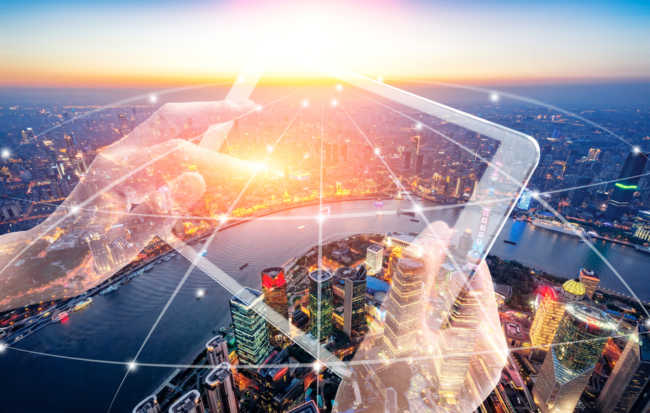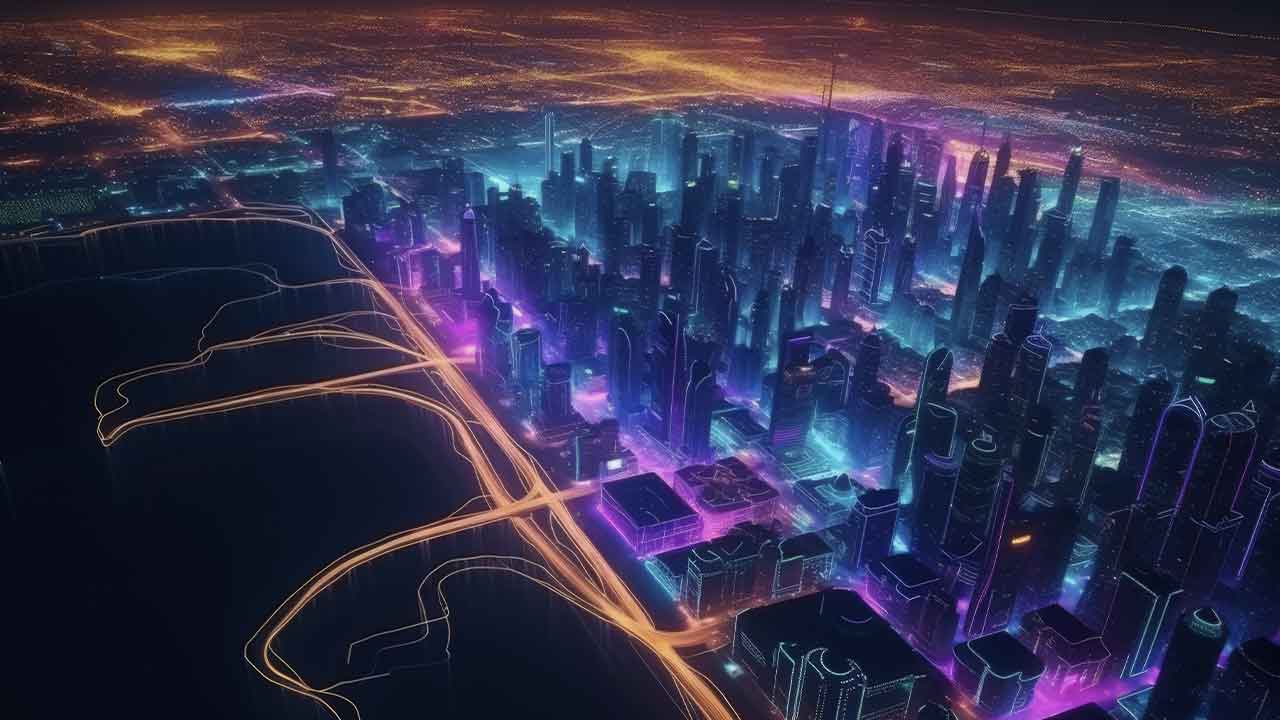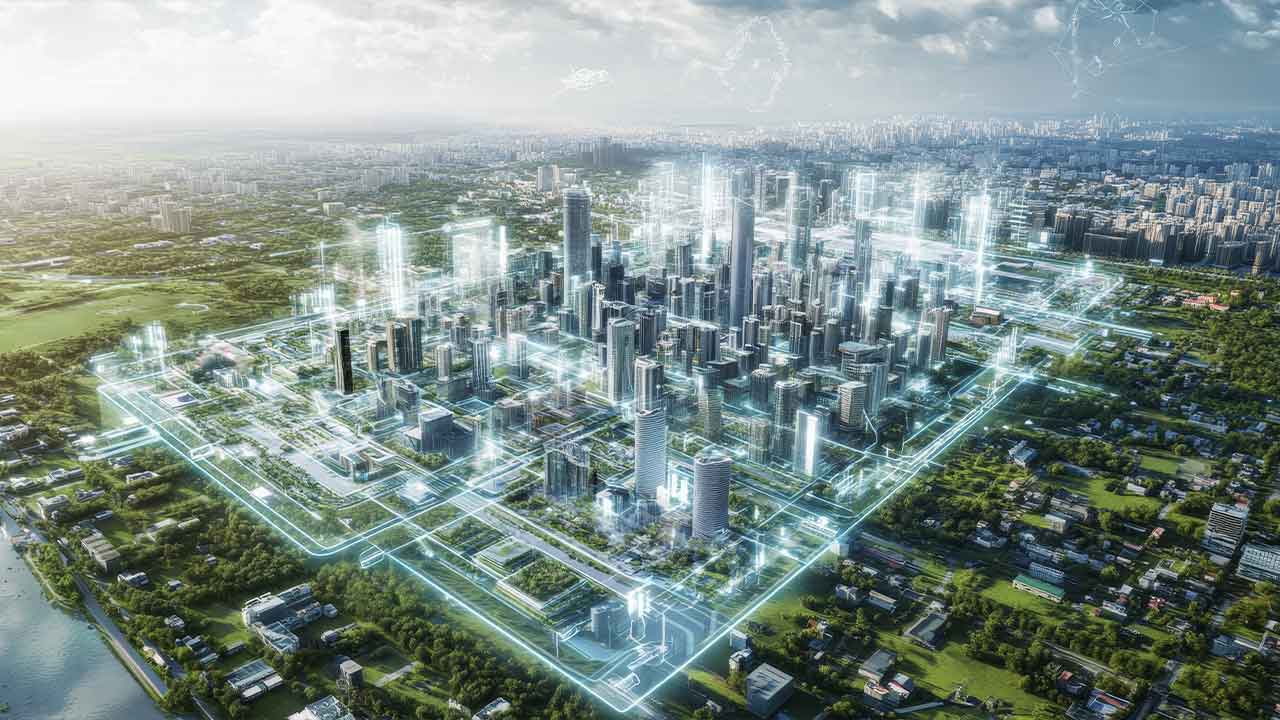City Digitalization: Welcome to the City 4.0
How can cities leverage the benefits of digitalization to relieve stress on overstretched services and resources? With seamless integration of data gathered by the Internet of Things (IoT), the city’s underlying infrastructure layer can be managed and optimized. Jan Schönig, Director for Urban Development & Smart Cities, gives insights:
Cities are under pressure. Urban centers all over the world are struggling to cope with booming populations that place an increasing demand on resources such as energy, clean water, and clean air. They are striving to find innovative ways of dealing with noise pollution, ever-increasing urban traffic, and the effects of climate change – and are more and more turning to smart technologies to achieve this. The question is no longer whether cities should digitalize and turn into smart cities, but rather when smart urban projects will be scaled up on a global level.
City Digitalization and Interconnected Infrastructure
Over the past decades, cities and their underlying infrastructures have been striving to optimize themselves to a high degree within their vertical silos. Already, many buildings are planned and built based on standardized Building Information Management (BIM) software; driverless trains operate at higher capacities; energy networks are becoming smart grids that can adapt quickly to changing demands. Interconnection of different city infrastructures will drive the next wave of improvements and efficiency gains in city operation.
This model is occasionally dubbed the City 4.0 – in analogy to Industry 4.0, which describes the impact of automation and data exchange on manufacturing. In the context of the city, the term may refer to buildings that connect actively with the energy grid and interface with mobility requirements, or to self-learning systems that will provide feasible information to improve air quality, to name only two examples.
City 4.0 Study: 50 billion devices connected by 2020
A 2015 study by consulting firm McKinsey identified digitalization as a disruptive force in cities. The potential of digitalization as a lever for productivity gains in urban infrastructures is only exceeded by its impact on industry and manufacturing, where it is already widely deployed throughout entire sectors, from small and medium-sized enterprises to large corporations.
The advent of digitalization has coincided with a dramatic decline in transistor prices over the past 25 years. More and more devices are now connected; it is expected that by 2020, more than 50 billion devices and gadgets will be communicating actively. The services already available today in all parts of urban life will be digitally enhanced; but more importantly, we will see more and more new services thanks to the availability and analysis of data.
No need to crash the prototype
What does digitalization mean in practice? It allows planners, for instance, to create a digital twin of the physical work environment and to connect the two for the purposes of improving design, engineering, and automation of processes, but also for end-to-end reporting and analytics. Simulation and predictive maintenance are becoming increasingly easy to conduct and embed in daily operations.
To visualize the benefits, think of the car industry, for example: Previously, developers would manufacture a new prototype, crash it, and then analyze what had worked out and what had gone wrong; then the next prototype would be built and crashed into the wall – repeat ad infinitum. It is easy to imagine how much faster and more efficient this process has become thanks to simulation software.
Helsinki creates a digital twin city
Applied to cities, digitalization can not only improve efficiency by minimizing the waste of time and resources, but it will simultaneously improve a city’s productivity, secure growth, and drive economic activities. The Finnish capital of Helsinki is currently in the process of proving this. An early adopter of smart city technology and modeling, it launched the Helsinki 3D+ project to create a three-dimensional representation of the city using reality capture technology provided by the software company Bentley Systems for geocoordination, evaluation of options, modeling, and visualization.
The project’s aim is to improve the city’s internal services and processes and provide data for further IoT smart city development. Upon completion, Helsinki’s 3-D city model will be shared as open data to encourage commercial and academic research and development. Thanks to the available data and analytics, the city will be able to drive its green agenda in a way that is much more focused on sustainable consumption of natural resources and a healthy environment.
First step towards the digitally managed city
From the visual 3-D representation, a wealth of data can be extracted – a first step towards the digitally managed city. But for this to work, the interconnected infrastructure components have to be able to talk to each other and to be understood.
So how does it work? The three-dimensional mesh created by a reality modeling software is linked to the IoT-enabled infrastructure components via cloud-based IoT operating system called MindSphere. Thus the city’s underlying infrastructure layer, such as energy, water, transportation, security, buildings, and healthcare, provides data that is fed into a common data layer in order to enable analytics and preventive as well as prescriptive measures. The smart city platform is capable of managing huge quantities of data.
Once this data is made available, open application programming interfaces allow innovative companies and urban administrations to come up with further use cases and to develop apps based on the available data for the good of the citizens, the city authorities, and local businesses.
A digital vision, ready to take off all over the world
Helsinki is not alone in collecting open data to enable and improve research and development on the City 4.0 concept. Another example is the city of Columbus, Ohio, which won the US-wide Smart City Challenge in 2016. The Smart Columbus campaign aims to improve people’s quality of life, drive economic growth, provide better access to opportunities, become a world-class logistics leader, and foster sustainability. How? By interconnecting infrastructure services, starting with transportation, housing, and healthcare, to model how new technologies work in a real city. If the question is when smart urban projects will start to scale up on a global level, the answer is now.
 Jan Schönig is the Director for Urban Development & Smart Cities at the Siemens Global Center of Competence Cities, responsible for strategy, partner relations, program management, and business development for smart city infrastructure solutions. Since joining Siemens in 1997, he has been involved in a variety of assignments, projects, and management responsibilities, including four years as Head of Corporate Development in Qatar and two years managing the Siemens IT Solution Unit in France.
Jan Schönig is the Director for Urban Development & Smart Cities at the Siemens Global Center of Competence Cities, responsible for strategy, partner relations, program management, and business development for smart city infrastructure solutions. Since joining Siemens in 1997, he has been involved in a variety of assignments, projects, and management responsibilities, including four years as Head of Corporate Development in Qatar and two years managing the Siemens IT Solution Unit in France.
Originally this article was published here and it was adjusted per IIoT World publishing guidelines.



